Design
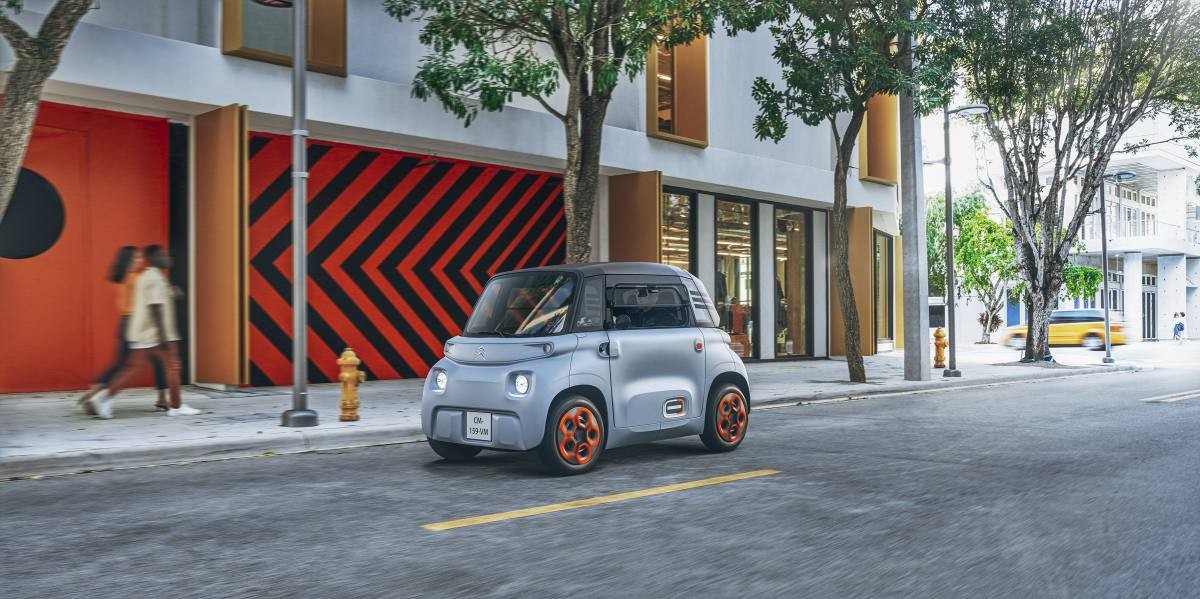
The Ami started life as the AMI ONE C Concept which was a study on new ways to overcome the challenges of designing a small, affordable city car. The two biggest challenges are how to create as much interior space as possible and how to keep the production costs low. Many of the ideas of the concept car have found their way to the Ami production model.
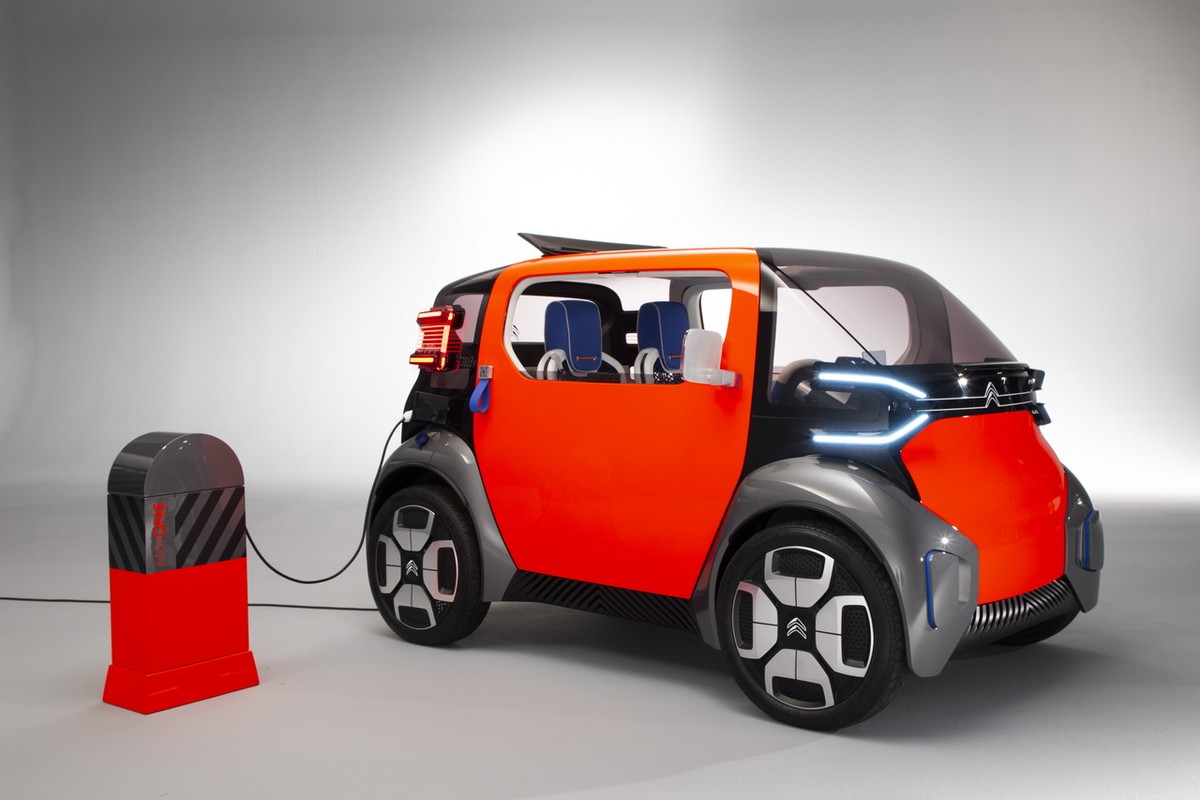
Cost Saving
The 'usual' cost-saving recipe when creating affordable city cars is to share a production line with other manufacturers. The drawback is that these manufacturers are selling the same car with slightly different design details.
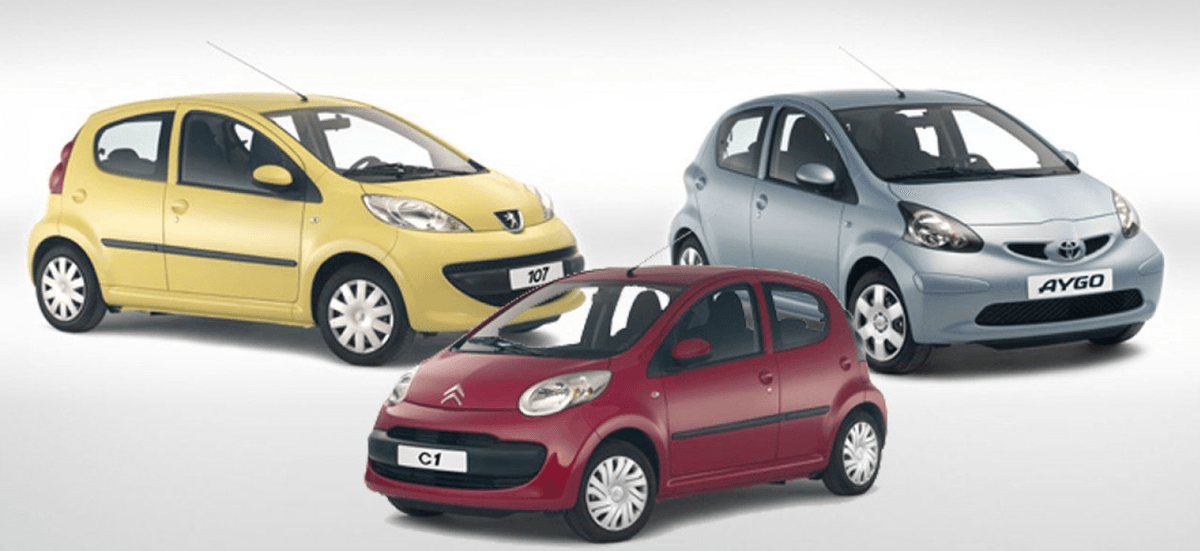
Citroën took a different approach. Instead of sharing a production line, they have come up with ways to create the simplest production line. This limits the variety of the design but instead of trying to hide that, the Ami highlights these limitations. The clearest example is the exterior bodywork. As you can see from the video below, the exterior is largely made up of only three different bodywork panels.
This gives it its quirky look as from far away the car does not seem to have a clear front or backside. The doors have a similar effect. Because they are identical, they open in opposite directions from each other. Instead of trying to hide these limitations, Citroën shows them off in ads and commercials, celebrating the quirkiness of the car.

Citroën was also inspired by the father of mass production, the Ford Model T. Like the Model T, the Ami is only available in one color. Personalization is important to many customers though. So Citroën came up with different sticker sets that the customer can use to personalize the car.
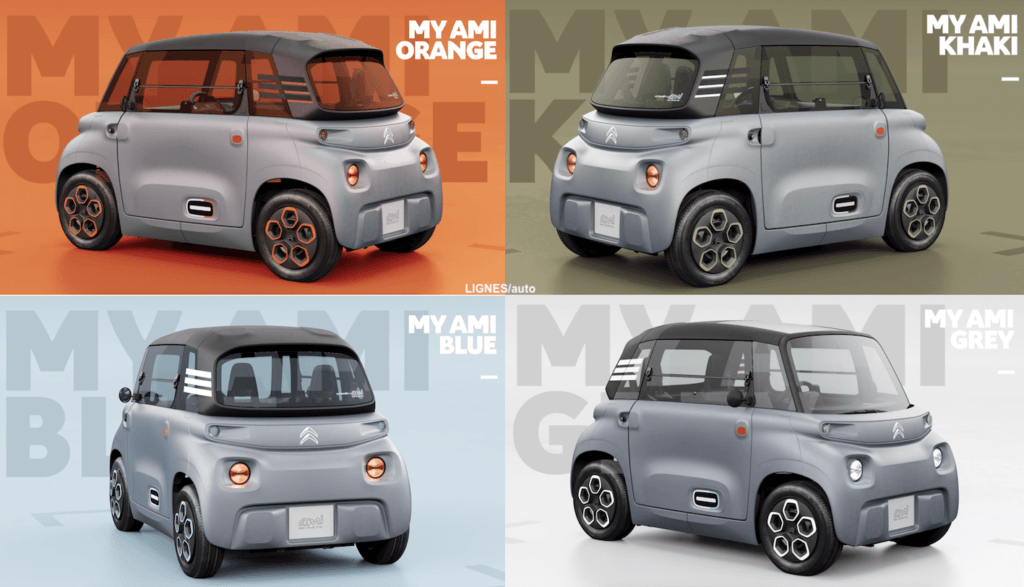
This smart design philosophy continues in the interior. For example, the side windows are not electric but hinge outward. Citroën like to point out that this was inspired by the 2CV, the spiritual father of the Ami, turning it into a nostalgic feature instead of a limitation.

It is not only for cost-saving though because the space that is normally used to house the window when it is down is now a storage compartment.
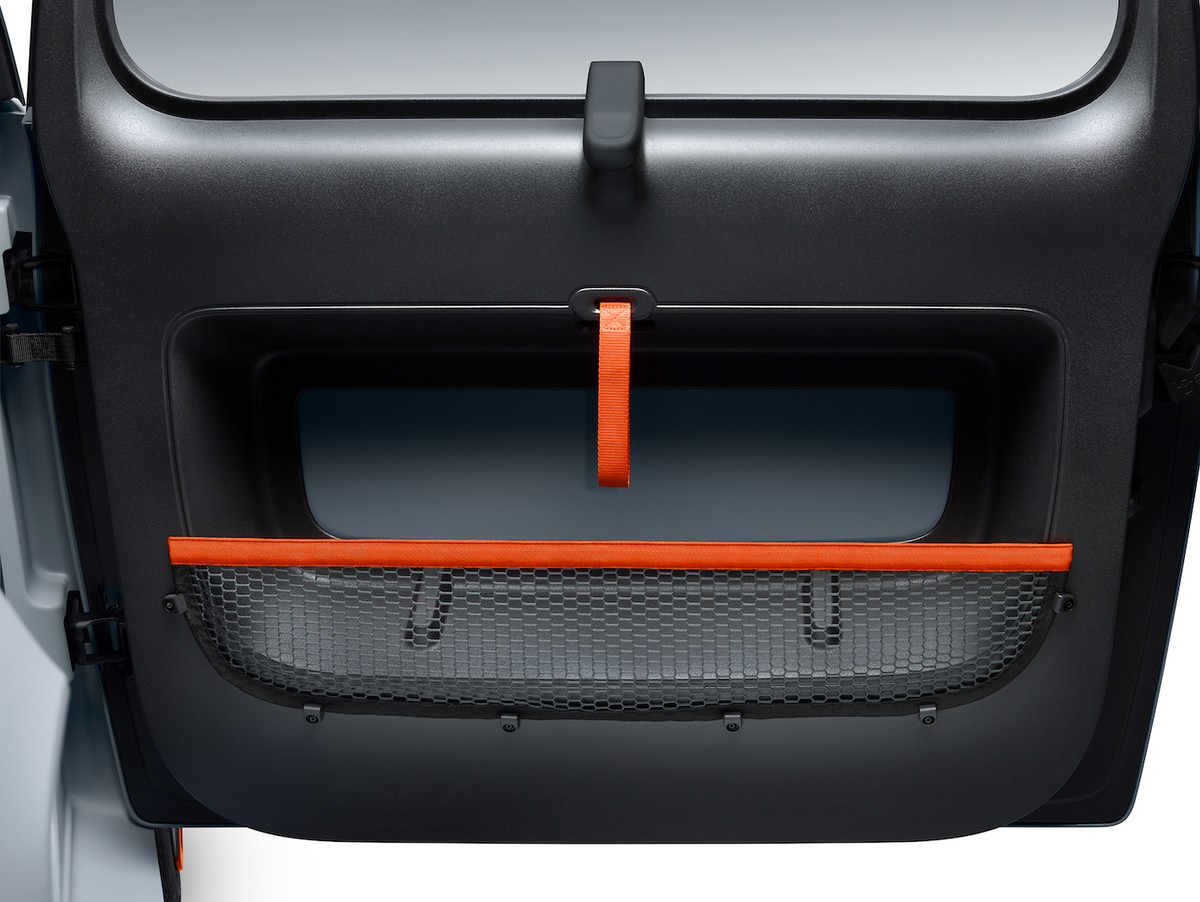
A big challenge for car companies today is that customers want more expensive technology to be available in the car. The adoption rate of new smartphones is high and customers expect the same level of innovation in their cars. For a cheap city car, it is impossible to provide this. That is why the Ami does not have a center console but instead, a big smartphone mount. Like this, the Ami leverages the driver's smartphone to offer the same features as premium cars without the cost. Similarly, the car has no speakers. Instead, there is an opening in the dashboard designed to hold a Bluetooth speaker.

The few functionalities it does have are a heater (no airconditioning), and a cheap, monochrome cluster screen that shows minimal information like speed, battery level, and time until the next charge.

Interior Space
Creating a lot of interior space is a huge challenge for small city cars. Thanks to Ami's electric drivetrain, the space that is otherwise used to house the engine, gearbox, and other mechanical parts can now be used for the interior. It also means that the wheels can be placed at the outer edges of the car which not only gives it a tiny turning circle, it also maximizes the interior space.
The many windows of the car allow for a lot of natural light to enter the cabin which helps in making the interior feel big. Entering the vehicle for the first time feels unreal. The car is much smaller than any other vehicle on the road. With its length of 2.41m and width of 1.29m, it is significantly smaller than a Smart Fortwo (2.69m x 1.66m). But when entering the car, the interior feels so spacious that it seems bigger than the car itself!
Clearly, the Ami is not meant for going on vacation so it does not need to have a big amount of storage space. It does manage to have enough interior space for the things you would bring on short trips. Due to the packaging of the car, the dashboard reaches quite far to the front of the car. In it, there are different patterns and holders for small items like a water bottle or sunglasses.

An idea that directly comes from concept car is to place the passenger seat a bit further back than the driver's seat which creates a space for a backpack in the passenger's footwell.

Driving the Ami around Paris, it feels more like a scooter than a car. Thanks to the many windows, you feel more exposed and connected to other road users. It is easier to make eye contact and communicate with cyclists and pedestrians so it is a much friendlier vehicle than a regular car. Despite the cheap materials, the interior is not an unpleasant place to be. By cleverly creating space and a place for the smartphone, it provides everything you might need for a short trip. It is hard not to love it!
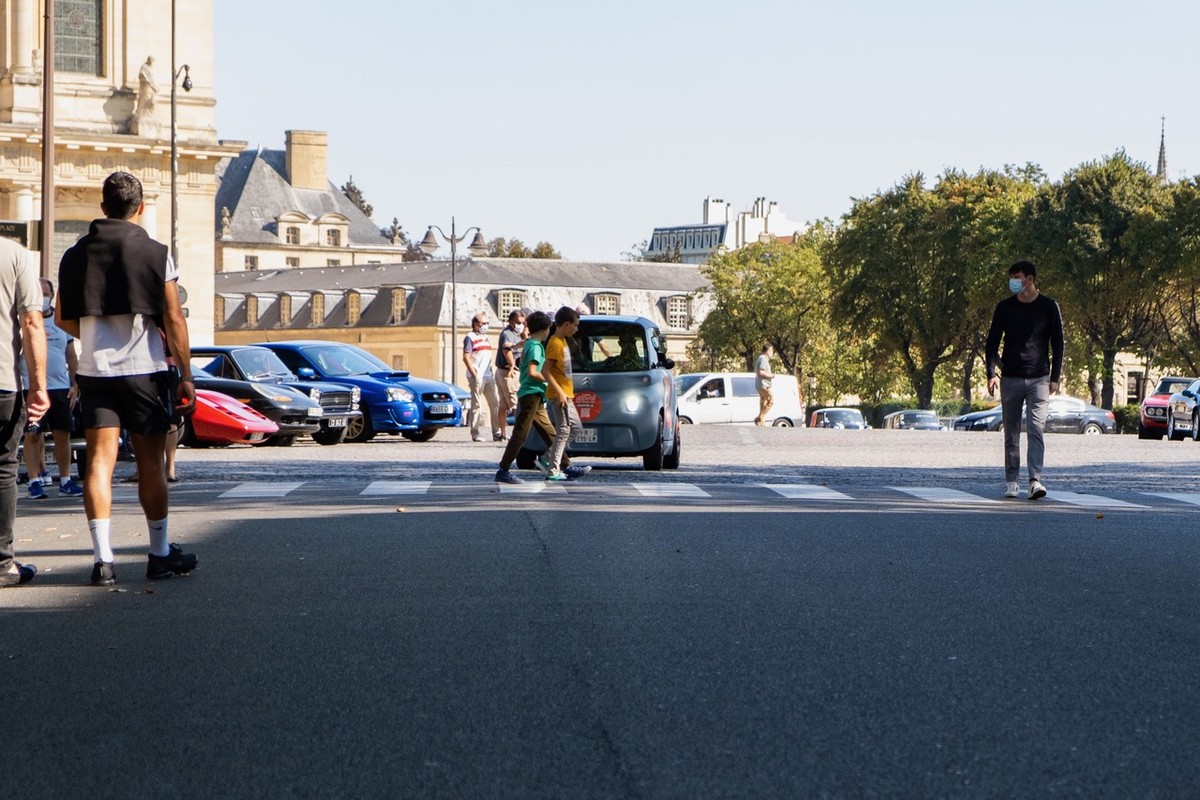
Who Is It for Then?
Citroën has intended the Ami to be a car for the (urban) masses and is trying to give anyone a reason to use one. It is available to buy for around 6000 euros or rent for 20 euros per month after a down payment. Additionally, several car-sharing services will include the Ami in their fleet. It is not only available at Citroën dealerships, but also in France's big electronics retailers Fnac and Darty.
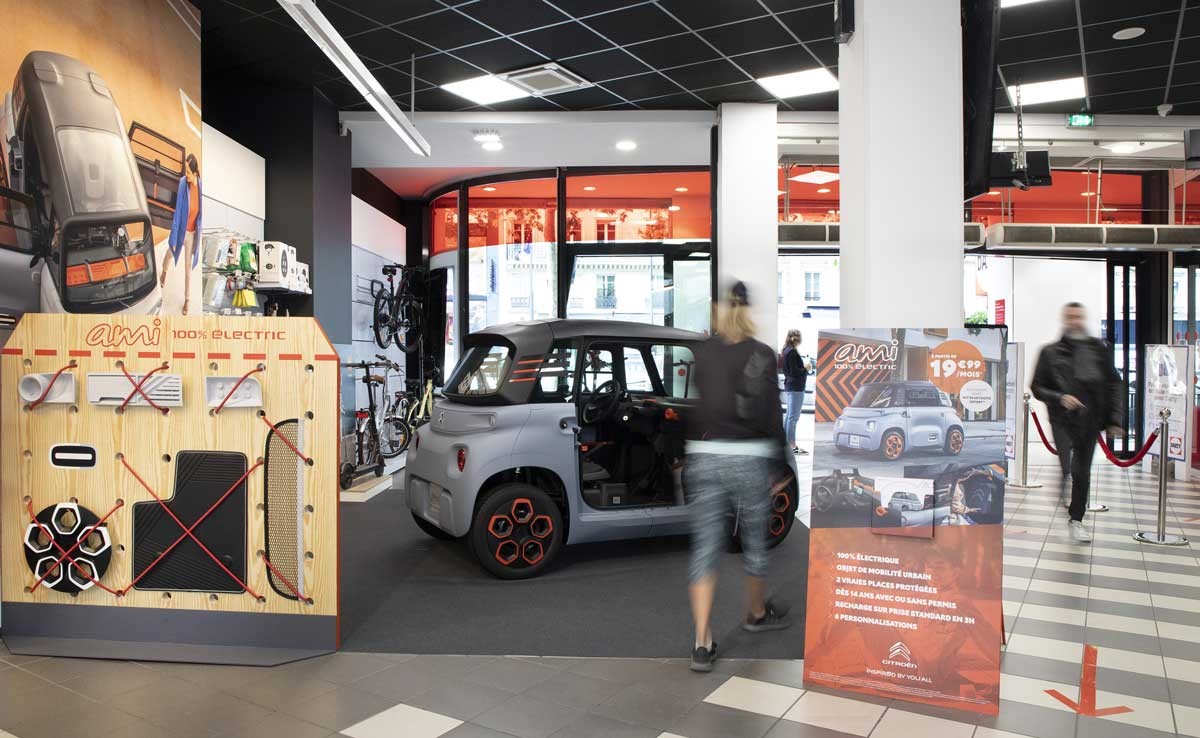
It has a top speed of 45km/h, it can do 75km on a full charge and it takes only 3 hours to charge it in a normal 220v household plug. It is classified as a quadricycle, not a car, so anyone over 14 can legally drive the car in France without a license.
Citroën did not design the car for a specific target audience. But the company does want to tap into the market of families. Citroën expects that almost half of the drivers will be younger than 18. They argue that parents will prefer to have their teenage children race around the city in a vehicle that is much safer than scooters or bicycles. The price of a monthly subscription is similar to a public transportation card or scooter subscription making it an attractive alternative. The first signs are clearly positive as there are currently waiting lines to test drive one.
So What Is The Problem?
So far so good then. The Ami is cheap, well-designed, eco-friendly, and accessible to most of the public. What is not to love? To understand my concerns, we have to dive back in time and look at the bigger picture of city transportation.
A History Lesson
Before cars were the main mode of transport, city streets were a place where children played football, where neighbors would run into each other and stop for a chat. They were a place where people spent time and socialized. But at some point, something changed. Paris was one of the first cities where this happened. Between 1853 and 1870 Baron Haussman transformed much of the medieval city center of Paris into a 'healthy' city. This involved tearing down much of the narrow streets to make place for wide boulevards.
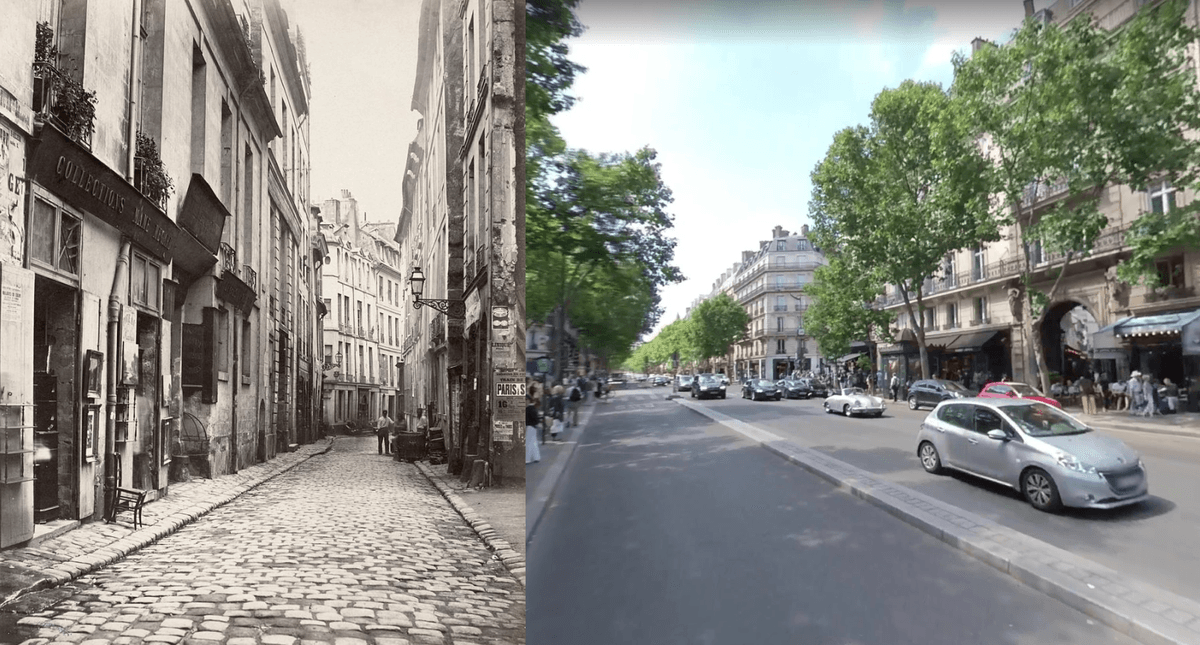
The side effect was that it allowed horse-drawn carriages to go much faster, resulting in louder, more dangerous streets. Before, pedestrians ruled the streets and other forms of transportation had to adjust to them. After the transformation though, the wide boulevards switched this around. Check this video from 1890 where this is clearly visible:
After the Second World War, this became even worse when cars were seen as the future of personal transportation. The modernist movement turned entire city centers into highways and parking lots. Suddenly, city streets were not a social place, they were there to get traffic from A to B as quickly and efficiently as possible. Pedestrians, despite being in the majority, were delegated to narrow sidewalks, jaywalking became an offense, and most of the public space was allocated to driving or parking.
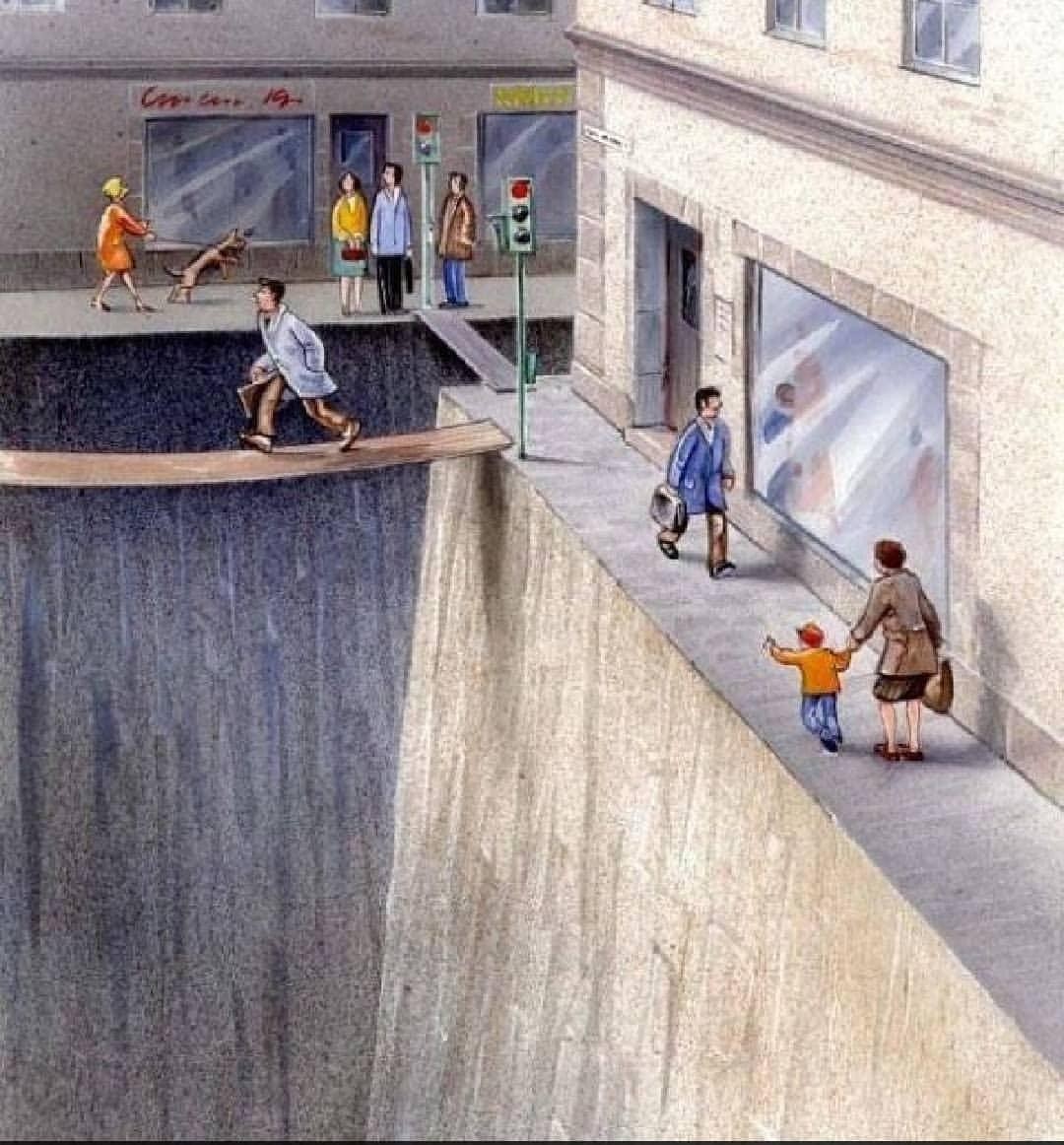
Over time we have accepted this as normal but it isn't. In 'The Arrogance of Space' Mikael Colville-Anderson describes the unfair distribution of space with Paris as an example:

With the rising importance of global climate change and more recently, the Covid crisis, cities are realizing that the current solution is unsustainable. A country where this realization has happened a few decades ago is the Netherlands. Like other countries in the '60s, Dutch cities were moving towards car-centric infrastructure. There were plans to destroy much of the historic center of Amsterdam to make way for highways. After years of protests against the dangers of cars, the Netherlands looked at safer, more accessible ways of developing its infrastructure.
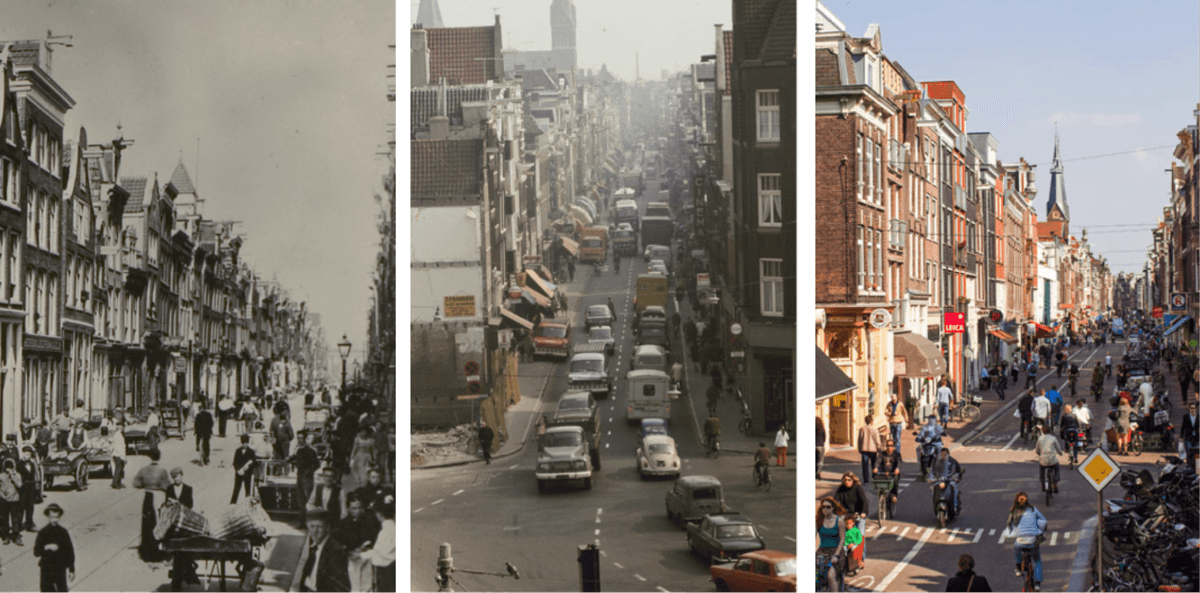
Today, the majority of citizens in Amsterdam, and other Dutch cities, either cycle to work, takes public transport, or a combination of the two. This results in cities with less noise, less air pollution, happier and healthier inhabitants, fewer road accidents, more independent children, ... The list goes on. Even though cycling is often attributed to Dutch culture, it has nothing to do with it. The Dutch cycle because the infrastructure is there. Other countries can achieve the same if they can stop their car addiction.
If there is one positive thing that has happened thanks to the Covid crisis, it is that more cities are realizing this. Paris has seen a massive transformation with more than 650km of new bike lanes. Designing your city around walking and cycling is not about forcing people to get on a bike, it is about offering alternatives to the car. When there are different ways of getting to your destination, people will choose the best form of transportation, which in most cases happens to be the bike.
A great example of this is the famous Rue de Rivoli. It used to be a three-lane street dominated by cars. Today, cars are only allowed on one lane, the rest is allocated to cycling. Since this change, around 10,000 cyclists use the bike lanes each day. Paris has proven the point that if you built the infrastructure, the people will use it.
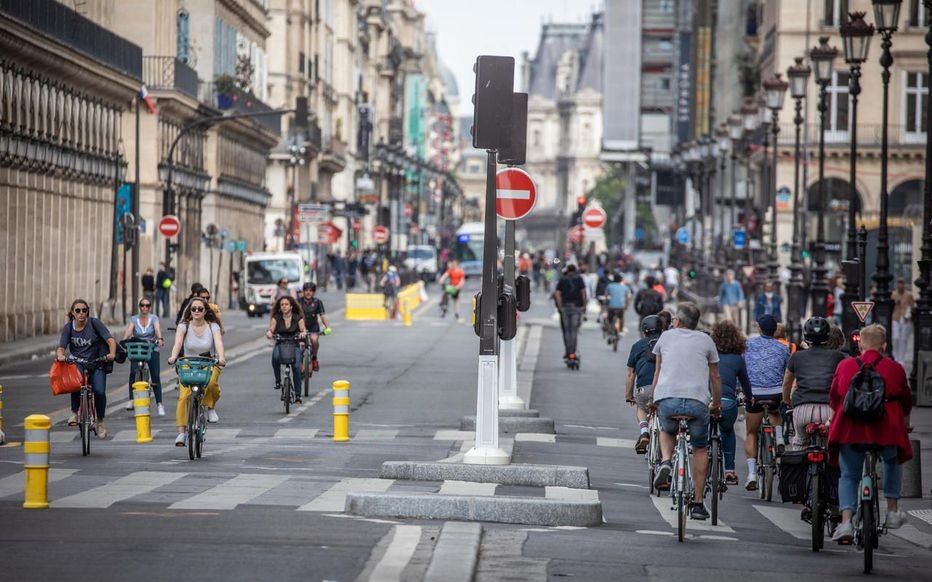
Where Does The Ami Fit In?
With this background information, let's go back to the Ami. Where does it fit into this new future? An ideal future would be one where the majority of people travel on foot or by bike. A vehicle like the Ami could be used for the short trips that are not possible on foot or by bike. If the majority of cars in a city were Ami, roads can be narrower, with less street parking, and less noise. The big problem is that the Ami does not compete with other cars, it competes with public transport, scooters, and cycling. It might motivate a few car users to switch to an Ami, but the majority will be the people that would otherwise travel by bike or public transportation.
You might argue that there is nothing wrong with choosing the Ami over a bicycle because it is more comfortable and safer. But it is a solution that works right now in a car addicted world. I fear the Ami will discourage people from cycling, creating less leverage for local governments to build better infrastructure.

The Ami is a great mode of transport for the less mobile, for delivery services, local governments, messengers, or other services. But the great majority of Ami drivers will be people who choose the comfort of driving over cycling or taking public transport. And in that sense, it will work against cities' initiatives to move away from our car addiction.
If everybody decided to cycle to work tomorrow, cities would change their infrastructure overnight. They would become less polluted, quieter, more pleasant, and the list goes on. I hope the Ami can convince some car owners to swap their big cars for the friendly Ami but I can't help but see it as a step backward in the path to more livable cities. Though, I will still smile every time I see one, especially on the big boulevards of Paris.
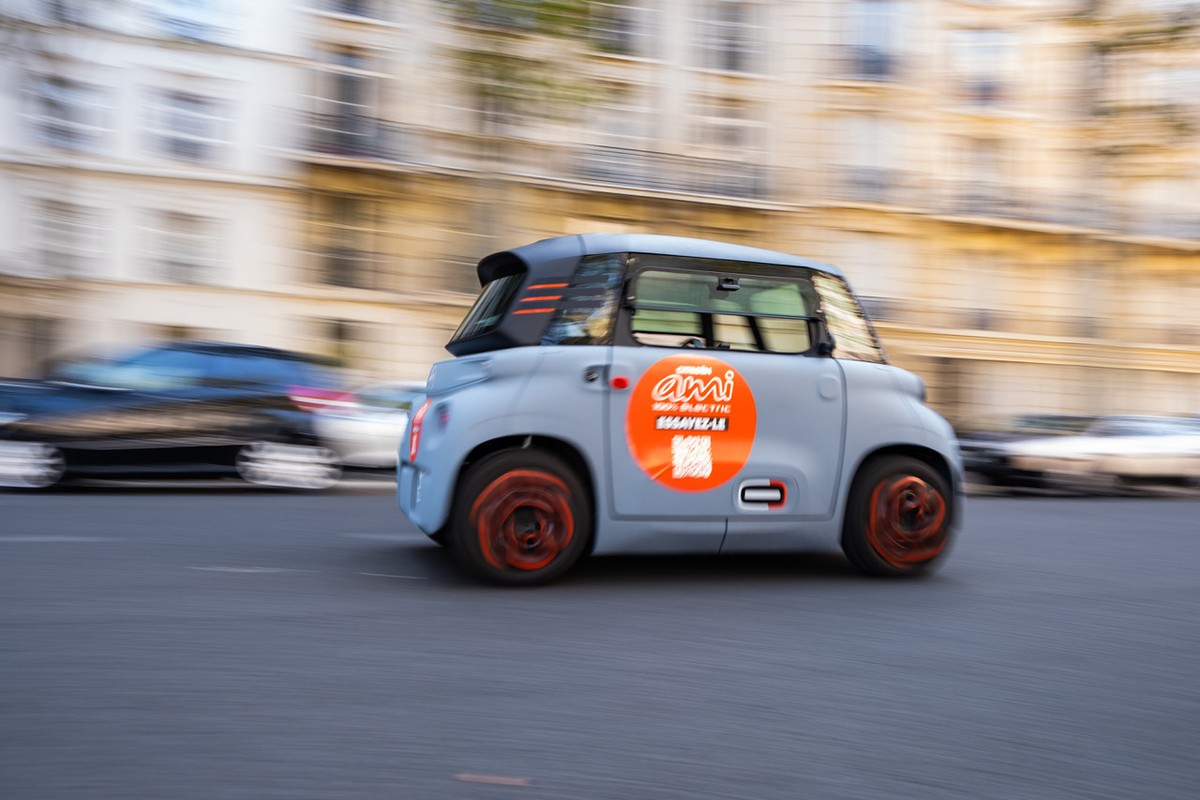
Get notified of new posts
Don't worry, I won't spam you with anything else

